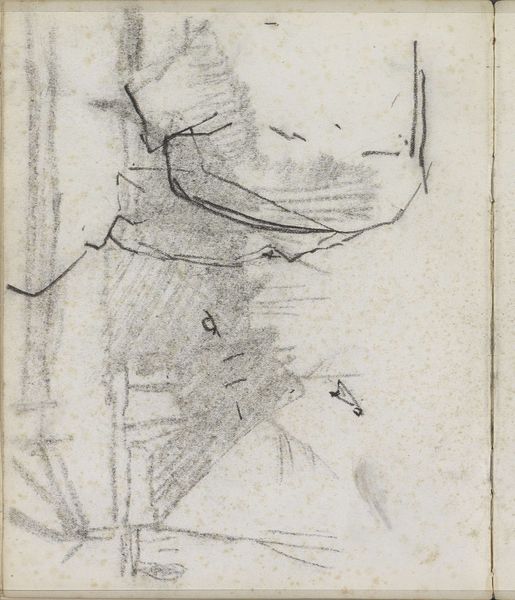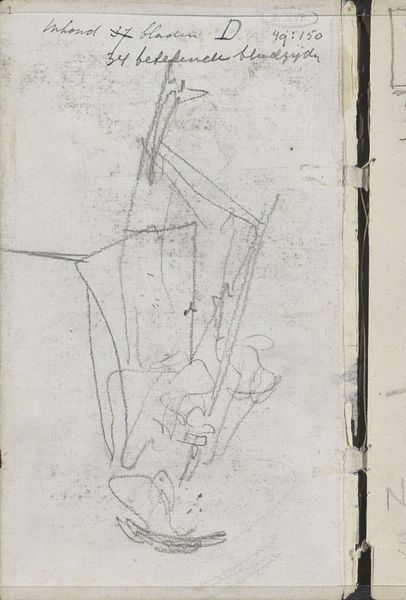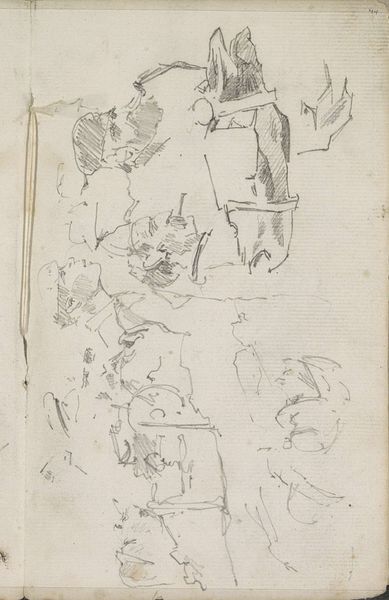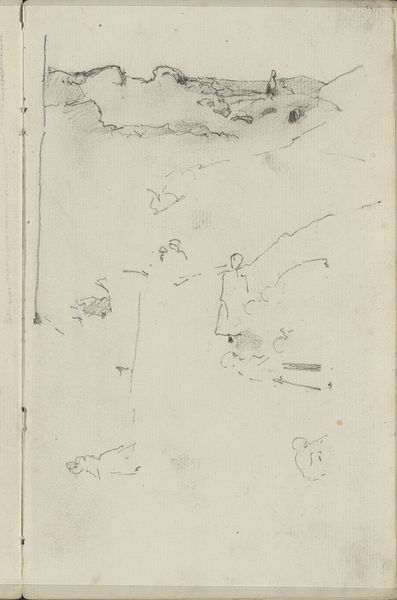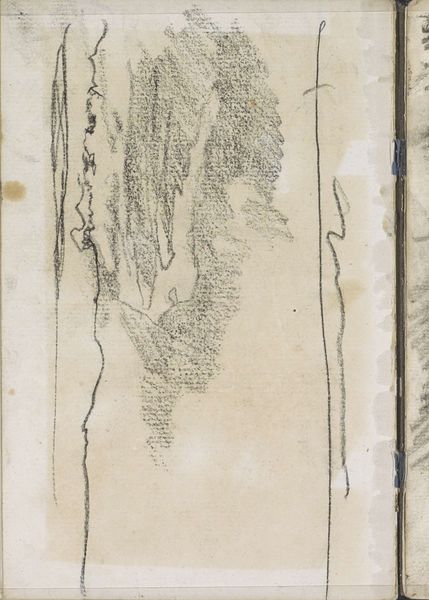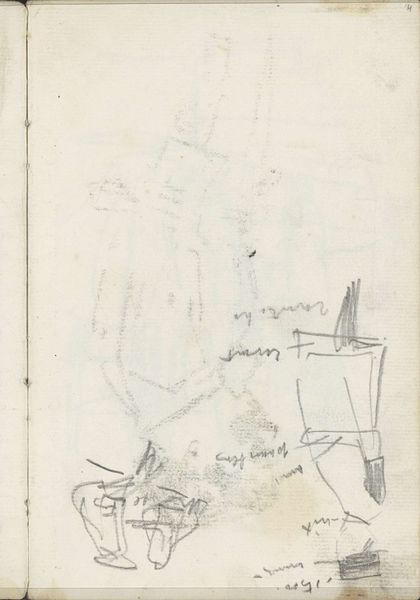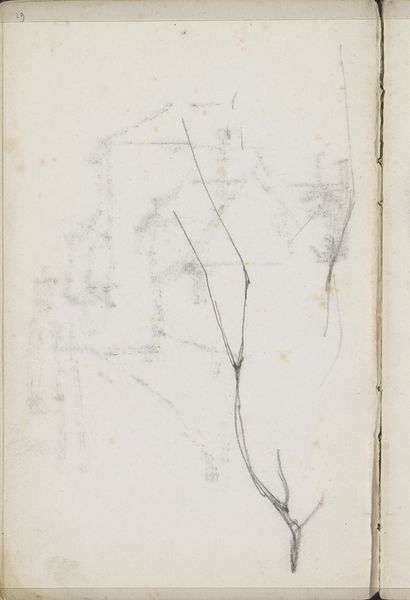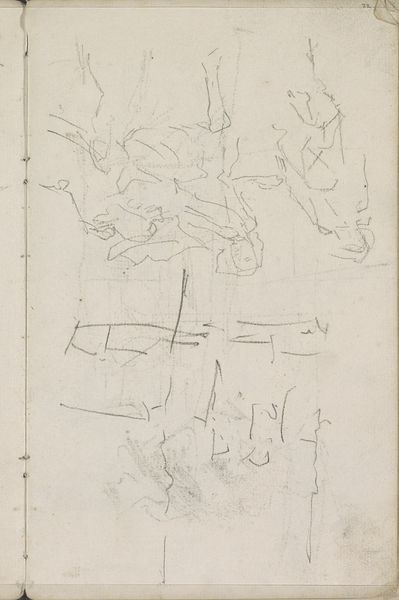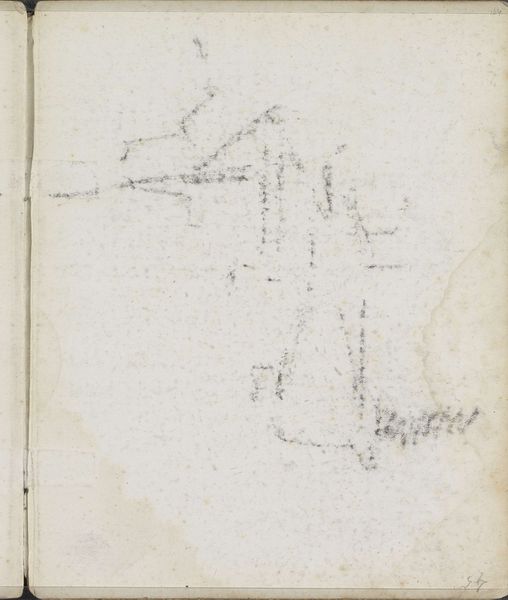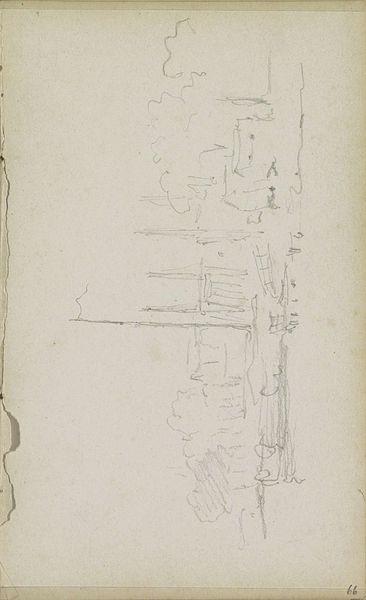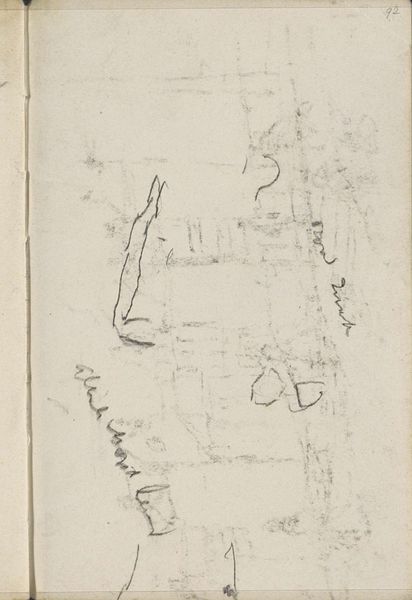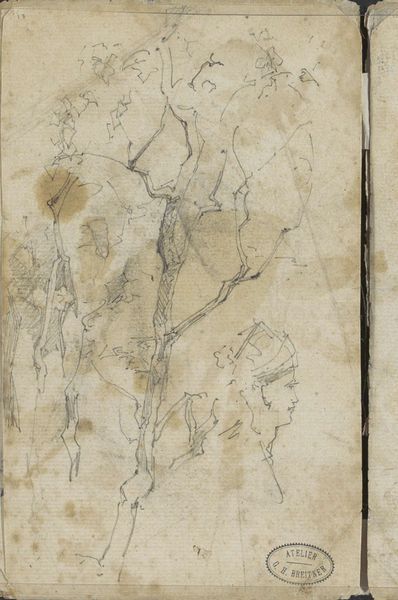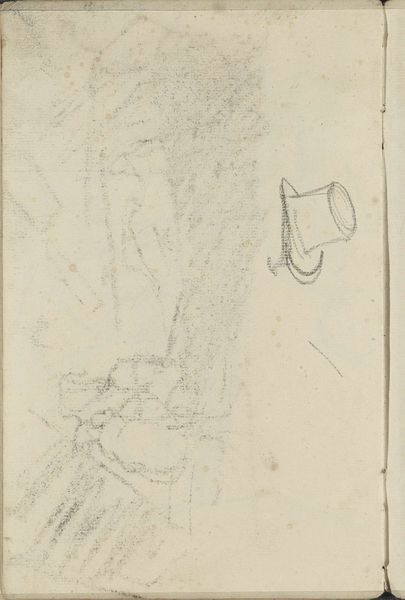
Copyright: Rijks Museum: Open Domain
Editor: Breitner's "Studie," from around 1895-1898, is a fascinating work. Done with graphite and charcoal on paper, it looks like a page from a sketchbook. What do you see when you look at the marks, the process of making it? Curator: Immediately I'm drawn to the raw materiality of the piece. You see the physical application of charcoal and graphite, the direct impression of the artist's hand. Consider the paper itself, its evident wear and tear with those stains. They speaks to the labor involved, the iterative process of creating art. What was Breitner thinking, using such simple materials? Editor: Perhaps he valued accessibility and ease. Since this work looks like it's from a sketchbook, perhaps that allowed for immediacy in capturing urban landscapes, reflecting the everyday life and the rapidly changing industrial world around him. Curator: Exactly. Breitner was working at a time of immense industrial growth. Cheap, readily available materials allowed artists to respond quickly. Notice the blurring lines, almost impressionistic, but consider them born of necessity. Could they reflect an increasingly fast-paced world where time itself was a valuable material? Also, observe that this art is mass producible by virtue of being a sketchbook page, able to be replicated with some form of early copying technology such as gelatin plates. What did art production mean at the end of the nineteenth century? Editor: It's interesting to see "high art" techniques used with everyday materials, perhaps a deliberate move to challenge traditional boundaries, and capture real, often unglamorous aspects of city life. Curator: Precisely! The means of production democratizing art? Perhaps. Editor: This discussion has shown me a deeper connection to the industrial revolution and accessibility within art. Curator: Indeed! The making reflects the context, and informs the work's lasting cultural resonance.
Comments
No comments
Be the first to comment and join the conversation on the ultimate creative platform.
